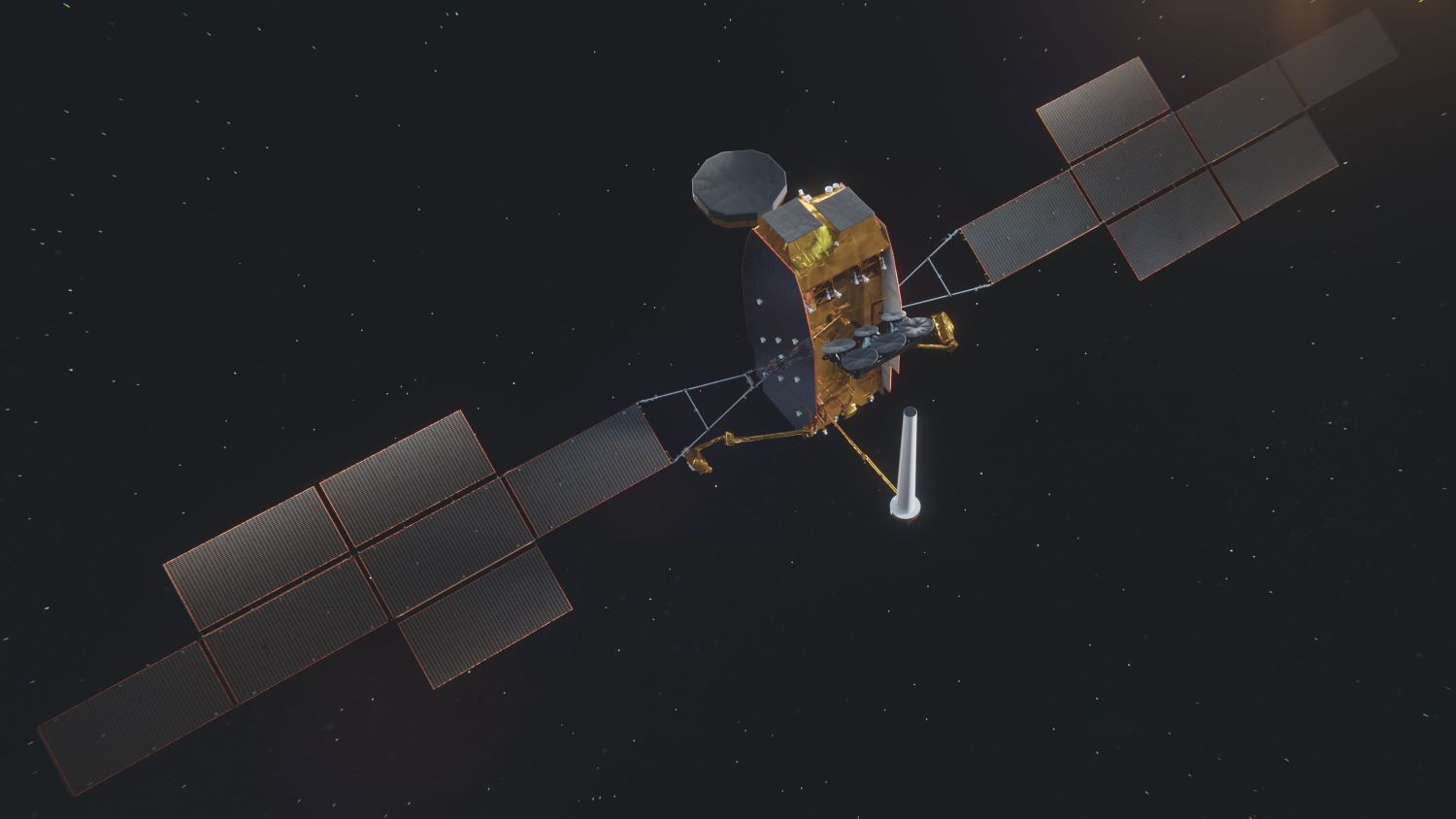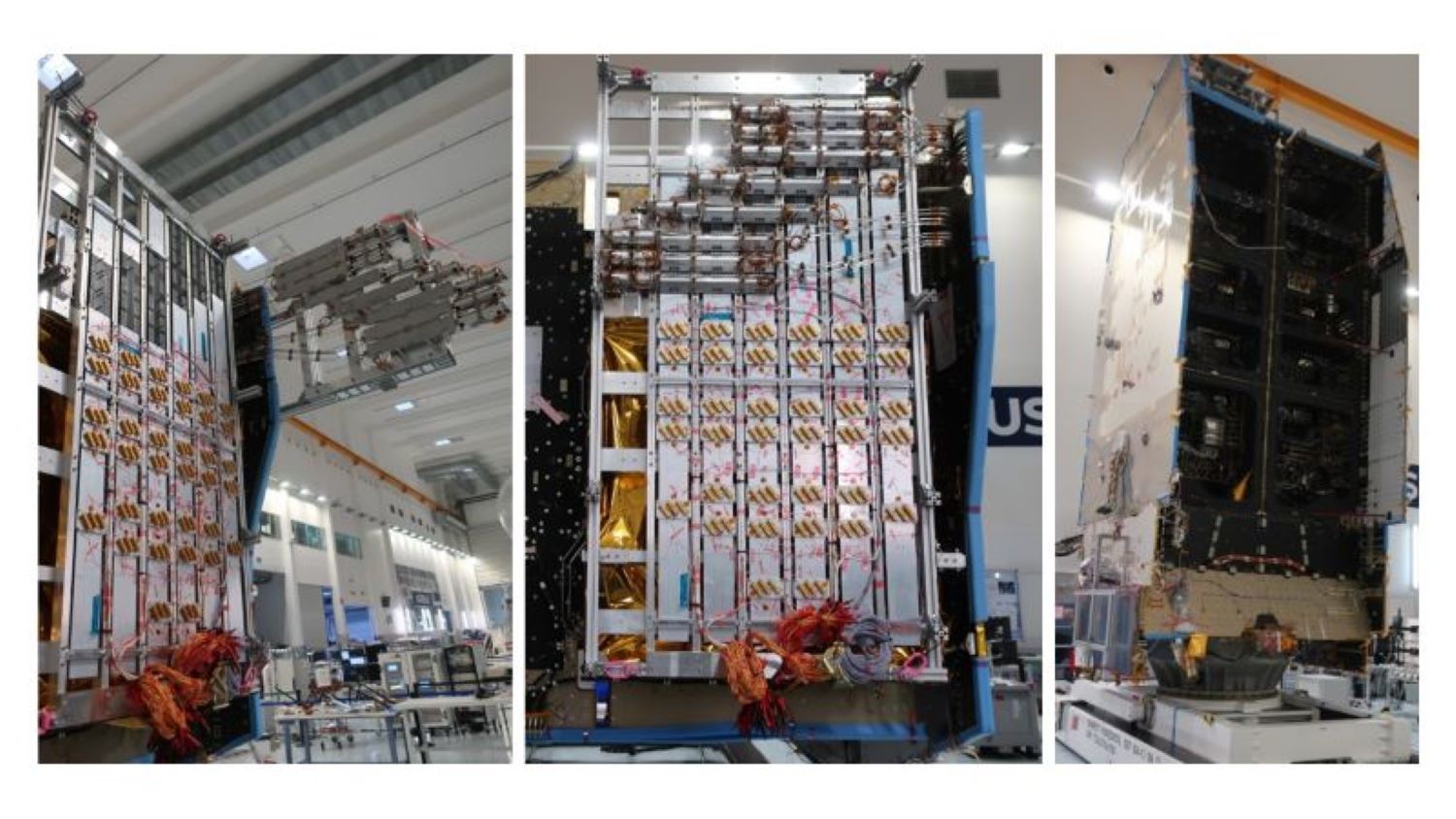European Space Agency and Hisdesat partnership sees Pacis 3 antenna move closer to orbit

The Pacis 3 project – which is a partnership between the European Space Agency (ESA) and satellite operator Hisdesat – has taken a significant step forward in its progress to launch a SpainSat NG satellite. As part of the thermal hardware for the Pacis 3 active antennas, four Loop Heat Pipe Sub-Assemblies (LSA) have been delivered and integrated to the first satellite in Toulouse, France.
Pacis 3, which sits within ESA’s Partnership Projects programme line of the Advanced Research in Telecommunications Systems (ARTES) 4.0, is also supported by Spain’s Centre for the Development of Industrial Technology (CDTI) and works towards providing more affordable, flexible and secure communications services for governmental users in Europe. The aim of Pacis 3 is to develop and integrate reconfigurable, active antennas for secure communications at frequencies used by governmental users – the most challenging active antennas that have been developed in the continent so far. A pallet of six individually steerable antennas, capable of working at the higher ka frequency band, are also being developed.
Following the successful Active Antenna Thermal Model test campaign, all flight hardware for the first satellite has been delivered to Airbus Defence and Space in Toulouse, with integration already underway. The antenna level integration was completed in 2023 at Airbus in Madrid, following the delivery of all Collecting Heat Pipes, their accompanying assembles and Linking Heat Pipes (LHP).
The transmitter active antenna heat transport system, designed and manufactured by Arquimea, was acceptance tested at their facilities in collaboration with Airbus. Eight Loop Heat Pipes were then assembled in four subassemblies, sharing a condenser plate for each pair of LHP. The aim of the two-phase thermal hardware is to collect the heat dissipated by the transmitting active antenna, transporting it along its ten-metre piping network to the condenser plates located on the spacecraft radiators of the satellite.

After a successful acceptance test campaign, all evaporators were integrated into the four LSAs. Subsequently, undergoing an exhaustive thermal acceptance test campaign, including a battery of tests to verify all LSAs met the technical requirements defined for the project. These checks include thermal cycling and performance tests, and feature start-up, and shut down, as well as heat transport capability at different temperatures and dissipation power levels. The final flight configurations tests are carried out in a climatic chamber.
A significant challenge that was presented during the design, qualification, manufacturing, and testing of the LSAs was the need to develop many complex jigs. These were required to properly deliver and integrate the LSAs from Arquimea facilities in Madrid, to Airbus in Toulouse. Despite complexities concerning the transport and handling, it took less than four weeks to integrate all four LSAs into the satellite.
This significant step in the development of the SpainSat NG satellite has showcased another example of successful project collaboration between Arquimea, Airbus and ESA teams. Launch for SpainSat NG I, with Pacis 3 onboard, is scheduled to take place during 2024.
“We are delighted to partner with Hisdesat through our ESA Partnership Project programme,” said Oscar Del Rio Herrero, ESA’s Pacis 3 Project Manager. “We have made great strides forward in our aim to provide more affordable, flexible and secure communications services via Pacis 3."


